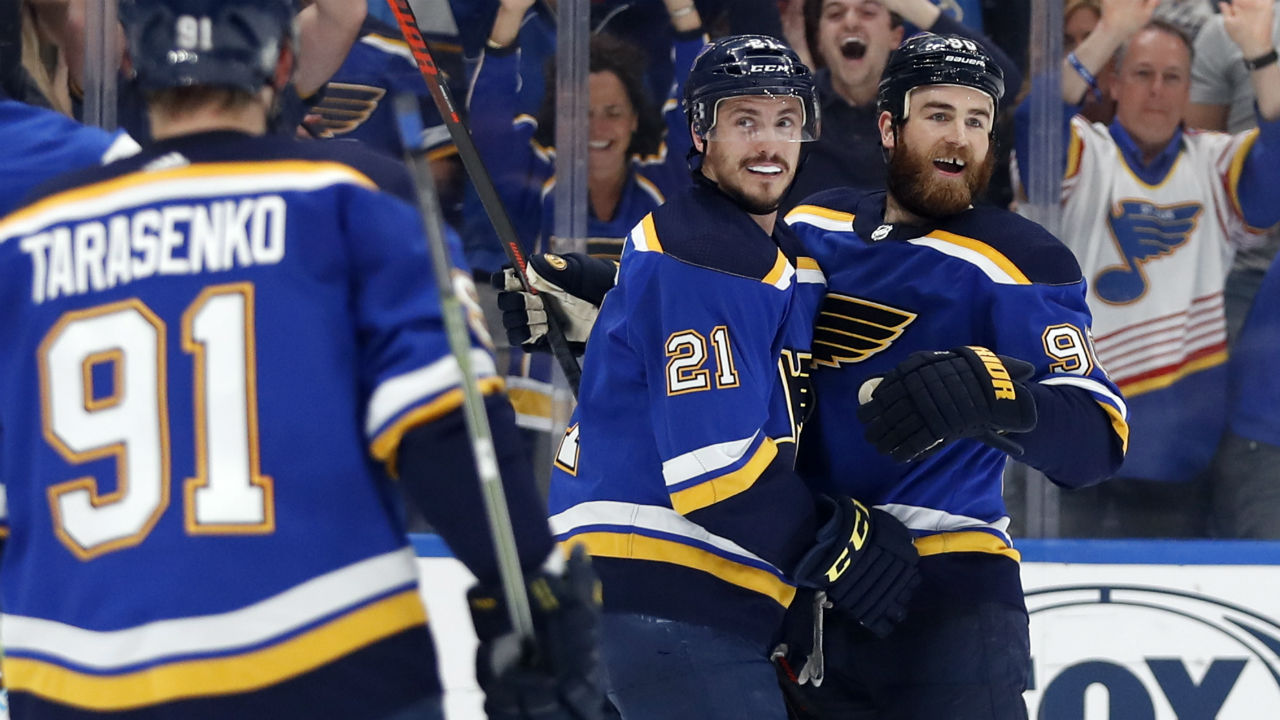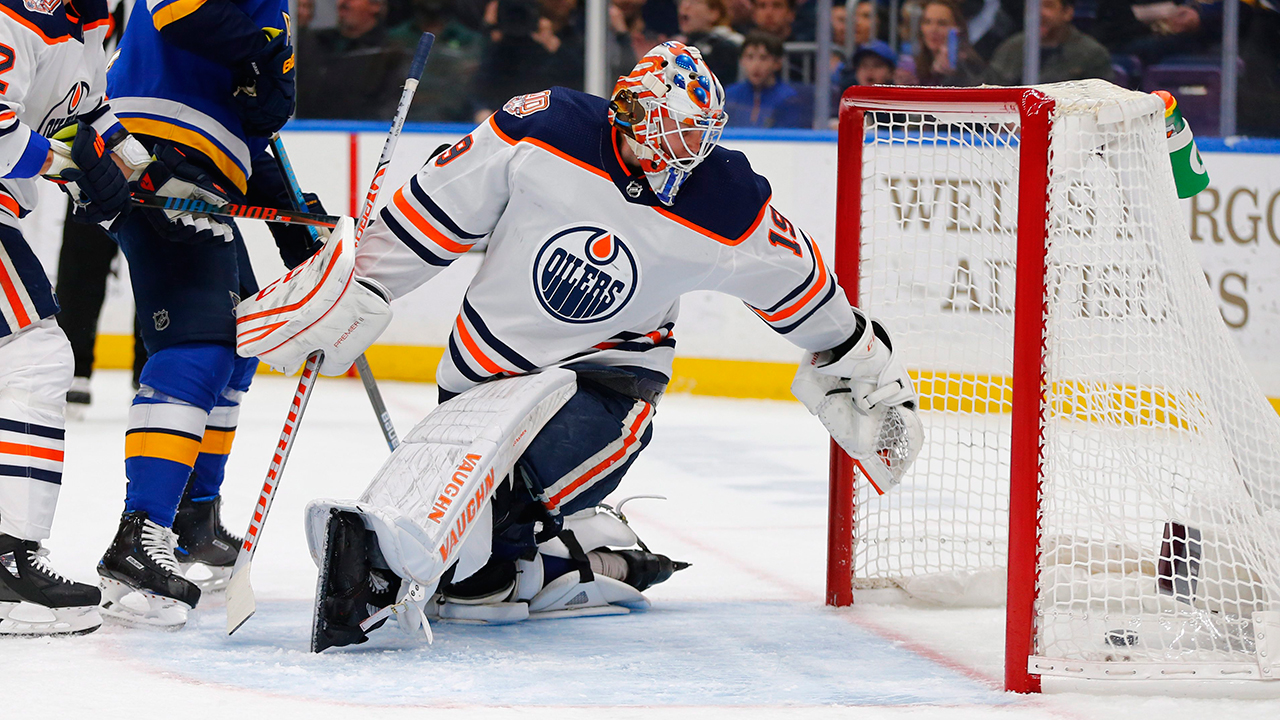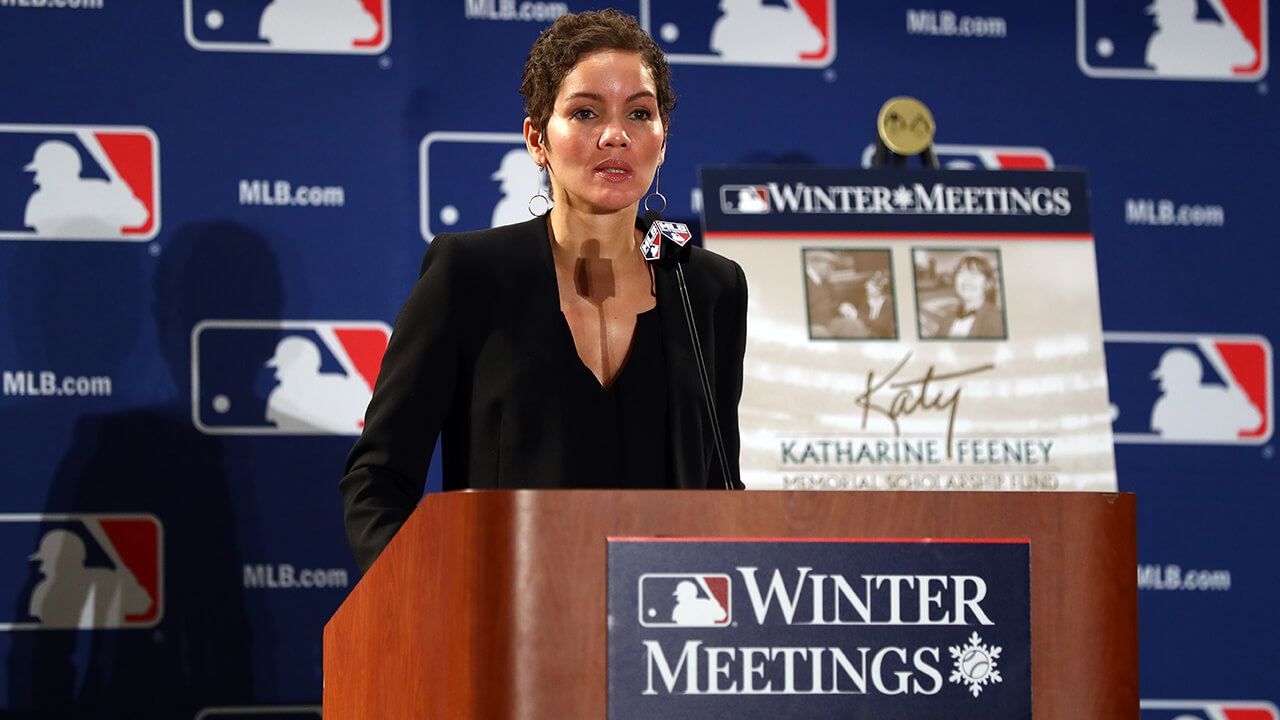In early January, the St. Louis Blues had seemingly reached their breaking point, which coincided with the exact mid-point of the 2018–19 season. Their record stood at 17–20–4, on pace for 76 points, which would be the team’s worst 82-game record since 2005–06. When management fired one coach, Mike Yeo, and brought in Craig Berube to serve on an interim basis in November, it did nothing to improve the team’s prospects. By January, with 25 of the team’s 41 remaining games on the road, analytics websites gave St. Louis less than a 10-per cent chance of making the playoffs. The local reviews were unforgiving. The St. Louis Post-Dispatch summed up the half-season in six words: “Too much frustration, too little success.”
This wasn’t tanking either, though for the stretches when St. Louis had the worst record in the NHL it sure looked like a push for the first-overall pick — the Blues Lose for Jack Hughes. Nor was it a rebuild. St. Louis had pieces, established NHL stars in what should be their prime: Right winger Vladimir Tarasenko has been one of the decade’s most dynamic talents; Alex Pietrangelo has regularly been high up on Norris Trophy ballots; and, via a July trade with Buffalo, the team had acquired Ryan O’Reilly, a centre who might have routinely been a Selke Trophy finalist if he had played for contenders in big markets.
Ahead of the season, the Blues had looked poised for a breakthrough. The team had come within a couple games of making the Final in 2016 — losing to San Jose in a six-game Western Conference Final — and over the years it often had run into teams on a roll or hot goaltenders in the post-season. The Blues had reason to think that it was going to be their turn.
The players were restless. “We can’t be doing this throughout the rest of the year,” defenceman Joel Edmundson told the Post-Dispatch in January. “We’ve got to figure something out. It’s tough mentally winning one, losing one.”
And at that point, Doug Armstrong did one of the toughest things a GM sometimes has to do: nothing at all. With fans and media wanting Armstrong to take action — demanding it even — he stood pat and waited for a turnaround that to many seemed wishful. Soon enough — barely — the Blues, the team with the worst record in the NHL at the beginning of the calendar year, did in fact get on a run and, almost unforeseeably, became a buyer at the trade deadline, acquiring defenceman Michael del Zotto from Anaheim for a sixth-rounder.
And now, four months later, with a 2-1 win over San Jose in Game 4 of the Western Conference Final, the Blues are now two wins away from their first Stanley Cup Final since 1970. And, really, they have to think themselves criminally unlucky not to be up three games to one against the Sharks.
This St. Louis team might not provide a teachable lesson for executives and players who find themselves off the NHL’s playoff grid in mid-winter. There’s no how-to in the Blues’ in-season transformation from doormat to Conference finalist, they’re just a very rare exception to the rule about a team not in contention at American Thanksgiving. But it’s telling that serial disappointments didn’t beget panic in the GM or dissension in the ranks.
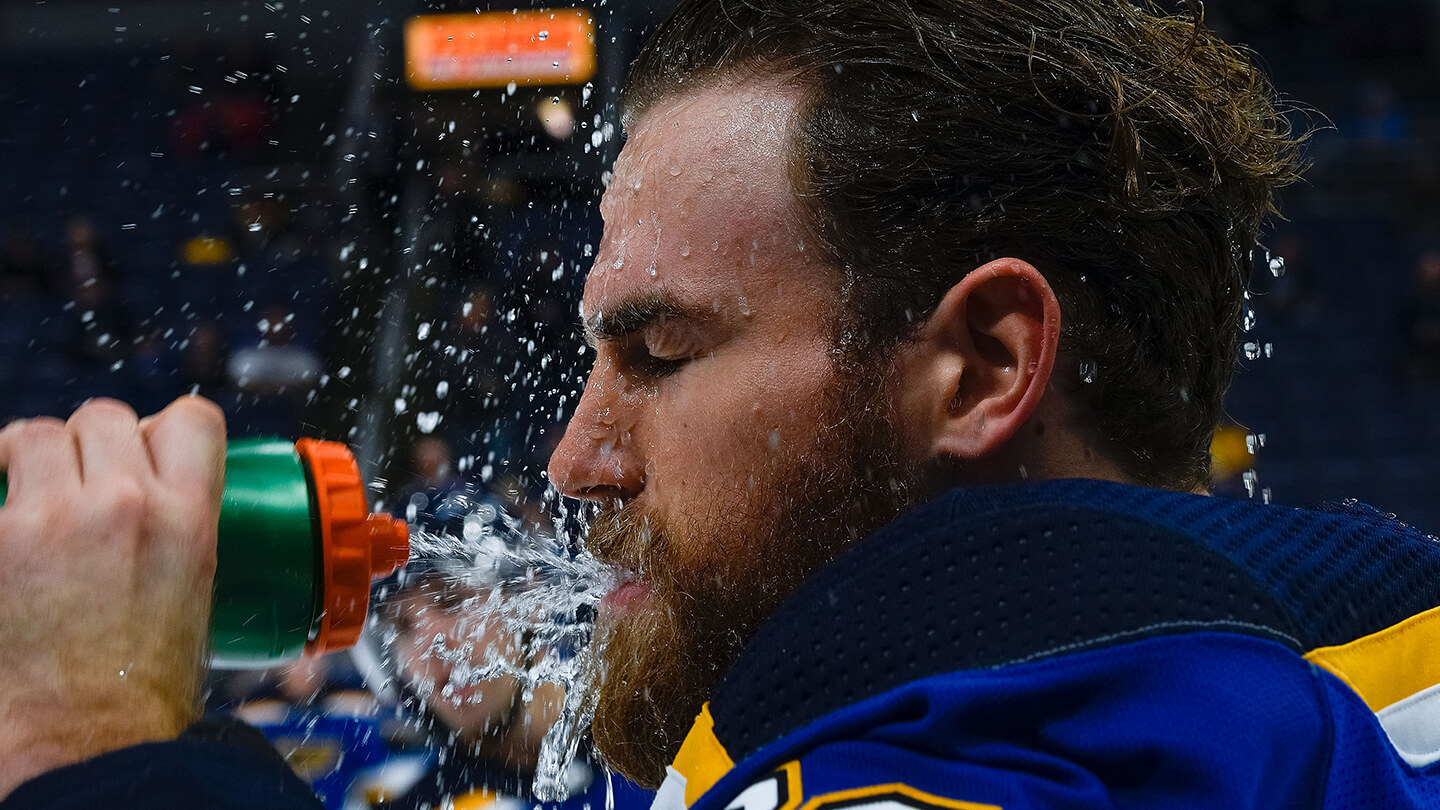
By mid-winter each year, NHL teams fairly divide into two camps: buyers and sellers; those who think they have a chance to make a run in the spring, and those doing everything short of putting veterans with expiring contracts on Kijiji. By January, hockey’s chattering class had slotted the Blues as a seller — in fact, St. Louis might have been the first team labelled as such. Twitter was aflutter with the rumour Armstrong had advised teams that everyone on the roster was available for the right price. The punditocracy was openly speculating about which players would best help perceived Cup contenders — Tarasenko to Vegas or the Bruins was one delicious rumour; in Toronto, Leafs fans were just waiting for confirmation of the acquisition of defenceman Colton Parayko.
It is, of course, a cliché that’s regularly dropped: The best trades are the ones you don’t make. There’s no knowing how many deals Armstrong didn’t make this year, so there’s no rating which of them was the best. And, that all seems awfully far in the rear-view mirror now, with hockey in St. Louis in May.
As Armstrong tells it today, trades were never as imminent as the rumours suggested. “You make your decisions based on the NHL calendar,” the GM says. “February 1 is where you start to strategize and make decisions about what you’re going to do ahead of the trading deadline, whether you’re going to be a buyer or seller or stay pat. Until then you are still figuring out what your team is about — so is everyone else. And it takes two to make a trade. Even if you want to do something before [February], it’s irrelevant unless someone else wants to do something.”
It’s not that Armstrong is by nature reluctant to pull the trigger on a trade-deadline deal. He moved a massive piece to Winnipeg back in February of 2018 when he traded centre Paul Stastny, who was coming up to unrestricted free agency, for a package that included a first-round draft pick. (Armstrong had already traded the team’s own 2018 first-rounder to Philadelphia for Brayden Schenn.) “We were still in the playoff hunt [in February 2018] with Stastny, but I thought we weren’t really playing well,” Armstrong says. Without Statsny, the Blues wound up with 95 points, missing out on the Western Conference’s second wild-card spot by a single point.
As the rumour mill and Twitter feeds suggest, many assumed that Armstrong had soured on this year’s team in general and certain players in particular. “If you went by the standings it looked really bad, but if you watched our games pretty closely you saw that we did some good things and played some good hockey,” Armstrong says. “This was a case of a team coming together that was figuring it out and finding ways to lose games that they should have won. We weren’t finding ways to win games. In December we started to play winning hockey but we didn’t get the results [and] had a few bad beats. We went on a road trip out to Western Canada and won two out of three playing really good.”
And really, when the numbers crunchers were putting the Blues’ chances of making the playoffs down in the 10-per cent range, the most important number wasn’t actually all that daunting in retrospect: At the halfway point of the season, St. Louis was seven points out of the wild card, but with games in hand on everyone ahead of them. And with Berube’s promotion from an assistant’s role, some of the underlying numbers — differentials in possession and chances, and shooting percentage among others — had started to trend in the right direction, even though the team had the worst record in the league on January 2.
The interim coach could easily have been accused of searching too hard for silver linings when he offered this assessment of his stars’ play. “They’ve been pressing for a while,” Berube told the Post-Dispatch after losing Game 41 to Dallas. “If those guys get clicking and putting the puck in the net, that’s gonna make a world of difference for not only them but the team. To me, lately, they’ve been working. And they’re competing. They’re getting good opportunities. They just gotta finish. But I like their work ethic and I like their competitiveness.” As it turned out, Berube was prescient.
Given that, as mentioned, the Blues had 25 of their last 41 on the road, the team’s second half was truly remarkable. Again, Berube was right on the mark in January when he was asked about the prospect of playing so often away from home. “It’s just a mindset,” he said. “We get on the road, the team’s together all the time. There’s no distractions. It can be a good thing. So I’m actually looking forward to it.”
It played out exactly as the coach laid out. Within about six weeks, the Blues became a greater-than-90-per cent lock to make the post-season. “We did a good job of sticking together and coming together,” winger Jaden Schwartz says. “We just couldn’t seem [in the first half of the season] to put three or four wins together. We’d beat a really good team, we’d lose. We’d win, we’d lose. We just couldn’t put together a streak. Then finally we pulled it together. We never really had that mindset where we were completely out of it, but we knew that we were running out of time and we kind of just got our mojo as a team.”
Tyler Bozak, the former Maple Leafs centre who signed with the Blues as a free agent last summer, says that losses didn’t translate into defeatism and, at some level, they started to play to keep the team together. “It never really felt like we were where we were [in the standings], to be honest with you,” Bozak says. “Nobody was too down or anything. We knew the talent we had and we kind of just realized how much we liked each other, I guess. We knew at that point of the year, if things kept going bad there were probably going to be trades and guys would be gone. I’ve been on really close teams before, but there’s something about this team. Guys spend a lot of time together outside the rink. Even at home, we all live kind of in the same area, spend a lot of time together. We love being around each other. I think that really brought us together throughout the year. Obviously, there were a lot of new faces at the start of the year and that takes time to build that chemistry and that trust.”
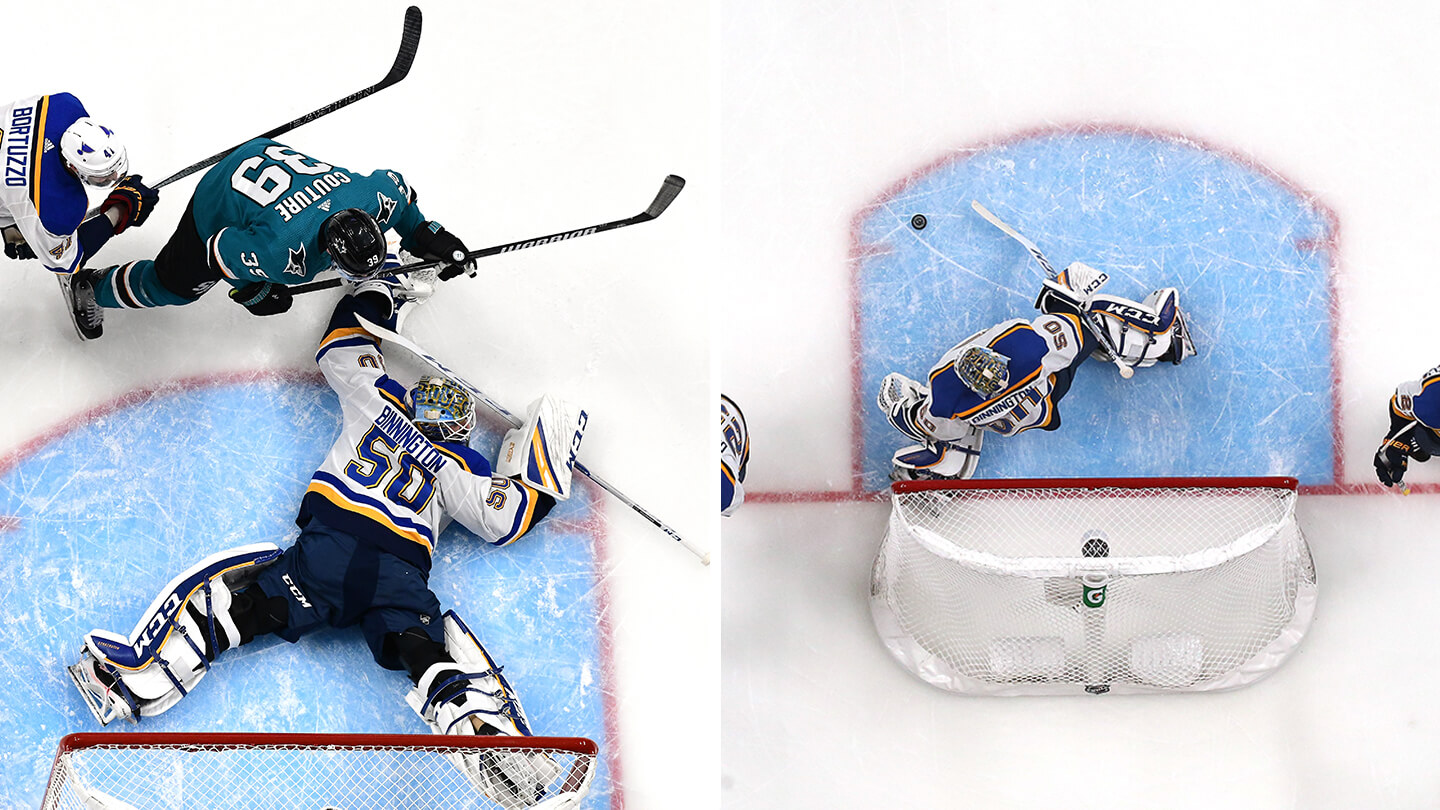
A lot of credit for the turnaround has been given to a player who wasn’t exactly a new face in the organization: 25-year-old rookie goaltender Jordan Binnington, who made his first NHL start in Game No. 40, stopping 25 shots in a 3–0 win over Philadelphia. No doubt, Binnington made for a great story — he’s a Calder Trophy finalist and if narratives factored in, he’d probably run away with the voting.
Veteran Jake Allen had been slotted as the No. 1 starter and though he has been sometimes unfairly scapegoated over the years for disappointments in St. Louis, there was no excusing his play in the first half — in the game before Binnington’s debut start and the game the next night, Allen gave up seven goals on 31 shots. Which is to say, the nominal No. 1 with a save percentage on the wrong side of .900 was all but asking to be bumped.
Binnington’s story has become an instant legend. Unforgettably, he backstopped the Owen Sound Attack, a last-place team the year before, to an OHL title as 17-year-old in 2011… well, maybe not so unforgettably because it seemed that the Blues management team had forgotten about him in their system. He was for stretches an occasionally used back-up in the AHL and seemed to reach a breaking point with the organization when he refused assignment to East Coast Hockey League before the 2017–18 season and was loaned out of the organization to the Bruins’ AHL affiliate in Providence. Feeling slighted by St Louis’ management, Binnington had his best professional season. This post-season could be a great last chapter to a Horatio Alger story. But the underlying truth is less inspirational. “His arrival coincided with us playing well,” Armstrong says. “That’s the way it really timed out. He had a fabulous run, no doubt, but timing had a lot to do with it.”
With a 13–1–1 record, a .937 save percentage and four shutouts through his first 15 starts, Binnington fully usurped Allen. But, as Armstrong notes, he came along during that stretch when the Blues headed out on the road, took Berube’s messaging to heart and tightened up play without the puck in their own end. Despite their disastrous first three months, they wound up allowing 28.6 shots per game, the fourth lowest in the league for 2018–19. In all, Binnington faced 25 shots or fewer in 17 of 30 starts, which no doubt helped him toward his 24–5–1 record and 1.91 goals-against average.
Not to suggest that Binnington was simply lucky and along for the ride, he wasn’t and isn’t — he might have played his best 60 minutes in the playoffs in Game 4 against San Jose, stopping 29 of 30 shots in a 2-1 in St Louis win. Still, the notion he saved the Blues’ season overstates and oversimplifies. What is much harder to exaggerate is how desperately St. Louis slumped in the first half of the season. O’Reilly might have been alone among the core talents in not being a disappointment, matching his career high with 28 goals for the season, finishing the year with a plus-22 in a lineup with no other forward better than plus-8. “Centre was an obvious area where we needed an upgrade and he was the player that he was advertised to be, no doubt,” Armstrong says. “He’s a 200-foot player that a coach can fall in love with and put him out there in any situation.”
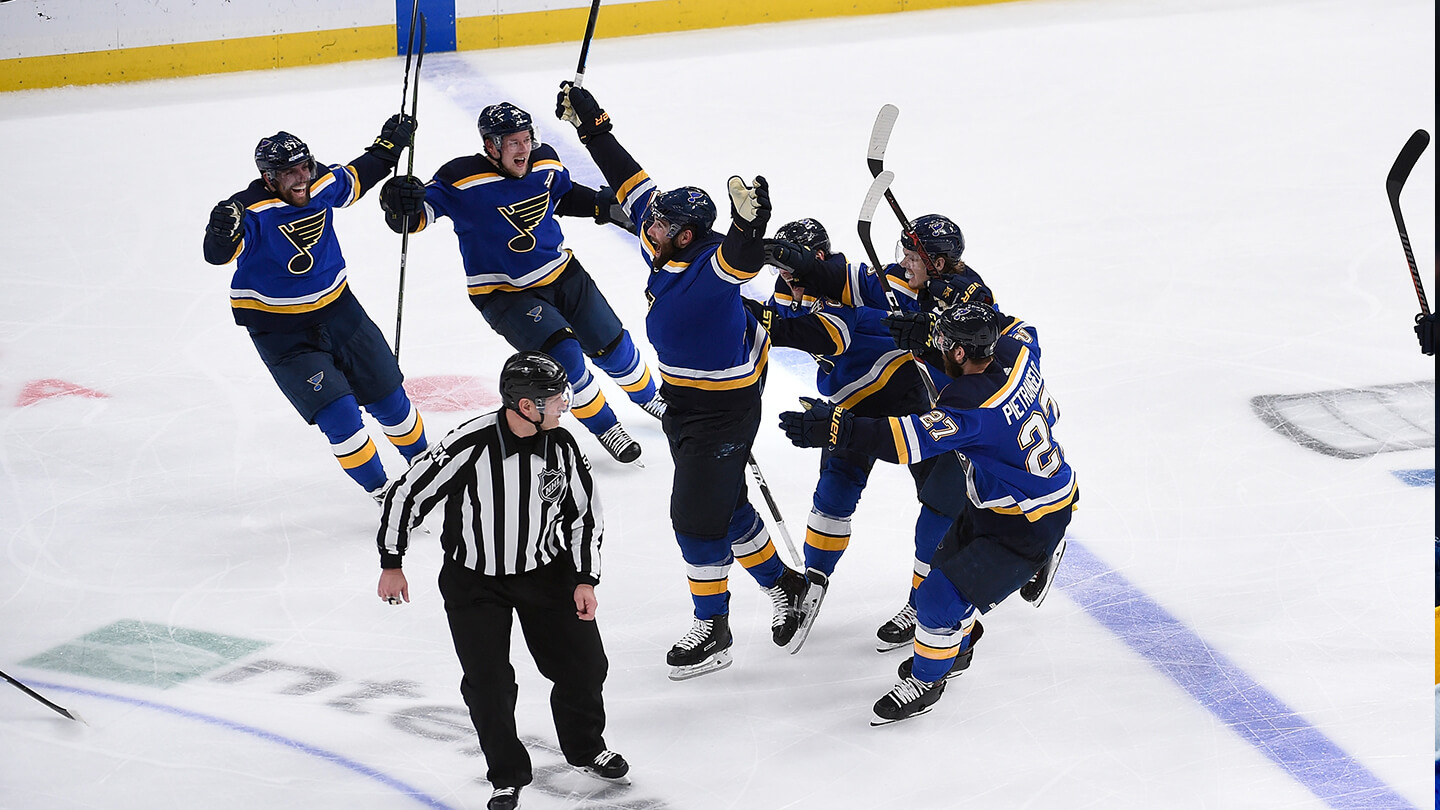
If you went through the rest of the lineup, though, practically everyone else was going sideways in the first half. And no one slumped as hard as the most valuable player in the Blues’ playoff run so far.
In his first six seasons, Jaden Schwartz had established himself as a reliable 20-plus goal-scorer with a career high of 28 in 2013–14. He seemed, at 26, to just be entering his prime, maybe poised to score 30 goals for the first time. Instead, in the first 41 games of the season he registered only three. “He has been an important player for us, coming up in our organization and being a part of the leadership group,” Armstrong says. “He has always been a better player for us than the numbers this season would show. He’s not a one-dimensional player. He’s not a player who has to score to help you win games. He can do a lot of other things that can help your team. He was just snakebitten.”
Schwartz’s woes didn’t quite cease when the Blues went on their roll in the second half — his 11 goals were a career-worst for a full season, eight shy of his previous low. That’s all forgotten now, though. Across a few, critical weeks, he’s gone from snakebitten to charmed. It’s as if his correction waited until the games mattered the most. His goal to open scoring in the Blues’ 4–2 win in San Jose in Game 2 was his ninth in 15 playoff games. Schwartz practically closed out the first-round series against the Winnipeg Jets on his own. “You’re happy for the player, first — the organization and his teammates are,” Armstrong says. “As bad as things ever were, he never wavered as far as his effort and commitment went, and that’s been the story with this team across 82 games and these playoffs.”
There’s no knowing how the Blues’ season will go down in history — as a champion, as a near-miss, as a historical anomaly — but in some ways, the most memorable game in it so far captured the season in a microcosm: the 2–1 double-overtime victory over Dallas in Game 7 of the Western Conference semis.
In regulation, the Blues dominated play, outshooting Dallas 41-16, but didn’t have the result to show for it. Binnington’s challenge was to stay focused when he saw only one shot on goal in the second period. Dallas surged a bit in overtime but the Blues didn’t lose their composure. Pat Maroon, like Schwartz another top-nine forward who was sitting on three goals at the halfway mark of the season, jammed a loose puck past the Stars’ Ben Bishop for the winner in the 86th minute of an instant classic.
Which is to say, the Blues kept it together, just as Doug Armstrong kept them together.
With files from Iain MacIntyre
Designed by Sasha Barkans
Edited by Evan Rosser

